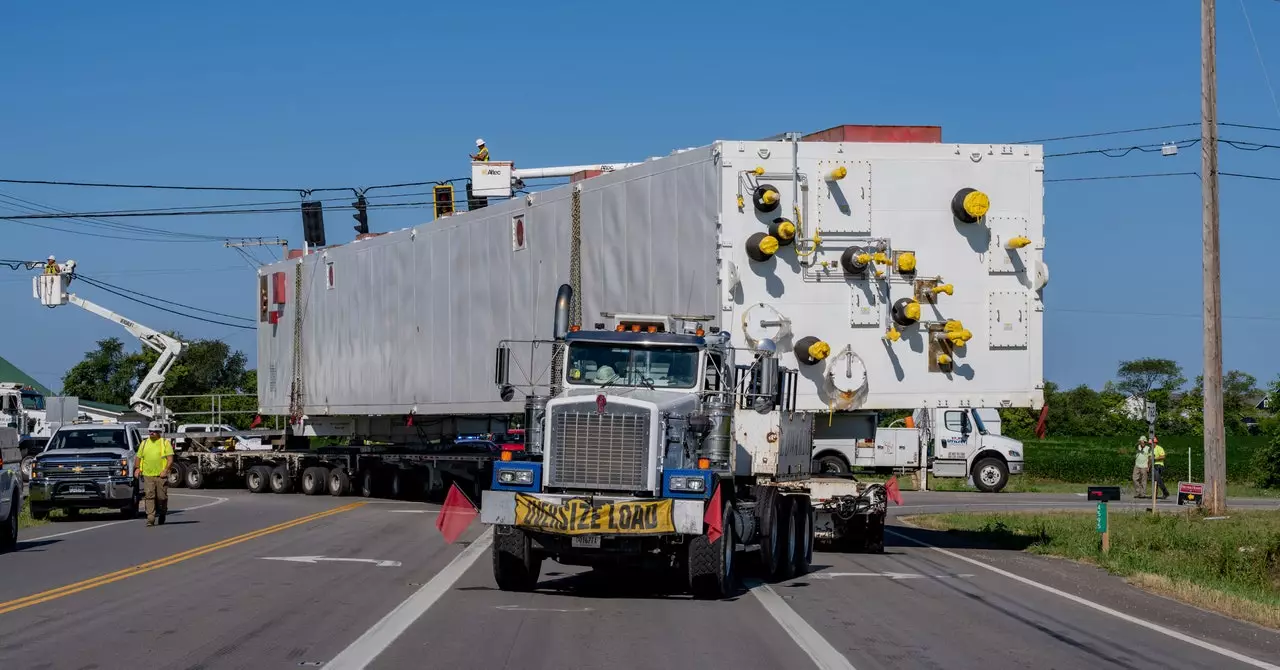In the realm of logistics, the successful movement of oversized loads, commonly known as “superloads,” marks a significant achievement. These exceptional pieces of cargo, which exceed 120,000 pounds, are increasingly becoming central to the infrastructure development pushed by tech giants, particularly in regions like Ohio. The recent transportation of a massive cargo known as a ‘cold box’—an essential component for establishing facilities aimed at producing advanced AI chips—has drawn considerable attention, not just for its size but also for the intricate planning and execution required to move it.
Weighing nearly a million pounds and measuring an astounding 280 feet in length, 23 feet in height, and 20 feet in width, this superload is not just any piece of machinery. It highlights the complexity of modern supply chains in the tech era, requiring meticulous planning that spans several years. The cold box, originating from Europe, underwent a long journey by barge across the Mississippi and Ohio rivers before reaching a specialized port—an early testament to the collaboration between various sectors to make such an ambitious project possible.
The logistics behind transporting superloads involve an array of stakeholders, demonstrating the interconnectedness of numerous industries. For instance, transporting the cold box necessitated the concerted efforts of truck operators, power and cable companies, local law enforcement, and highway patrol officers. This multifaceted coordination underscores the scale of modern supply chain logistics in moving significant loads across land: it is not just about driving from point A to point B, but rather a theater of logistical synchronization.
Seven days were allocated for this massive operation, a duration that speaks volumes about the challenges one must negotiate, including the need to adjust infrastructure along the route. Power lines and traffic lights had to be physically relocated to ensure the safe passage of the cargo. This logistical ballet must often account for community concerns too, particularly when such movements inconvenience local traffic—hence the urgency to complete deliveries before school resumes, minimizing disruption.
As this superload drew closer, it captivated the local community in Ohio. Social media platforms, like Facebook, became arenas for tracking its progress, capturing a unique blend of excitement and trepidation among residents. While some welcomed the spectacle and the promise of economic revitalization, others expressed frustration at the traffic disruptions caused by the superload’s journey.
Emily Stone, an ardent follower of these events, has become a symbol of community engagement, known fondly as the “Load Chaser.” Her devotion to observing the transport of superloads encapsulates a deeper sentiment within the community—a longing to be part of something larger than their everyday lives. By dedicating time to witness this momentous occasion, she, along with others, connects their history to the evolving technological narrative.
The backdrop of Portsmouth, Ohio, enriches this story. Once a hub for factories and industrial operations, the transformation to a high-tech economy highlights the tensions between nostalgia for traditional manufacturing and the realities of contemporary development. However, local histories are also marred with challenges, as Stone’s account of her father’s work in a uranium enrichment facility reveals the long-lasting effects of industrialization on communities.
The introduction of superloads like the cold box symbolizes a pivotal shift toward technology-driven economic models. The establishment of Intel’s vast new site, dedicated to AI chip production, could potentially signal a resurgence for an area that has witnessed economic decline over the years. However, this transition raises questions about sustainability, energy consumption, and the legacy of past industries in regions like Portsmouth.
As these transformative projects unfold, balancing the needs of development with community welfare will be imperative. Discussions surrounding the impact on local residents, traffic, and environmental factors will need to remain at the forefront as Ohio steps into a new epoch defined by technological advancement.
The journey of superloads across Ohio is not merely a logistical feat, but a symbol of a region embracing change while grappling with its historical identity. Through a lens of community engagement and technological progress, we see the fragile thread connecting past and future, illuminating the road ahead for places like Portsmouth as they navigate an evolving landscape.


Leave a Reply